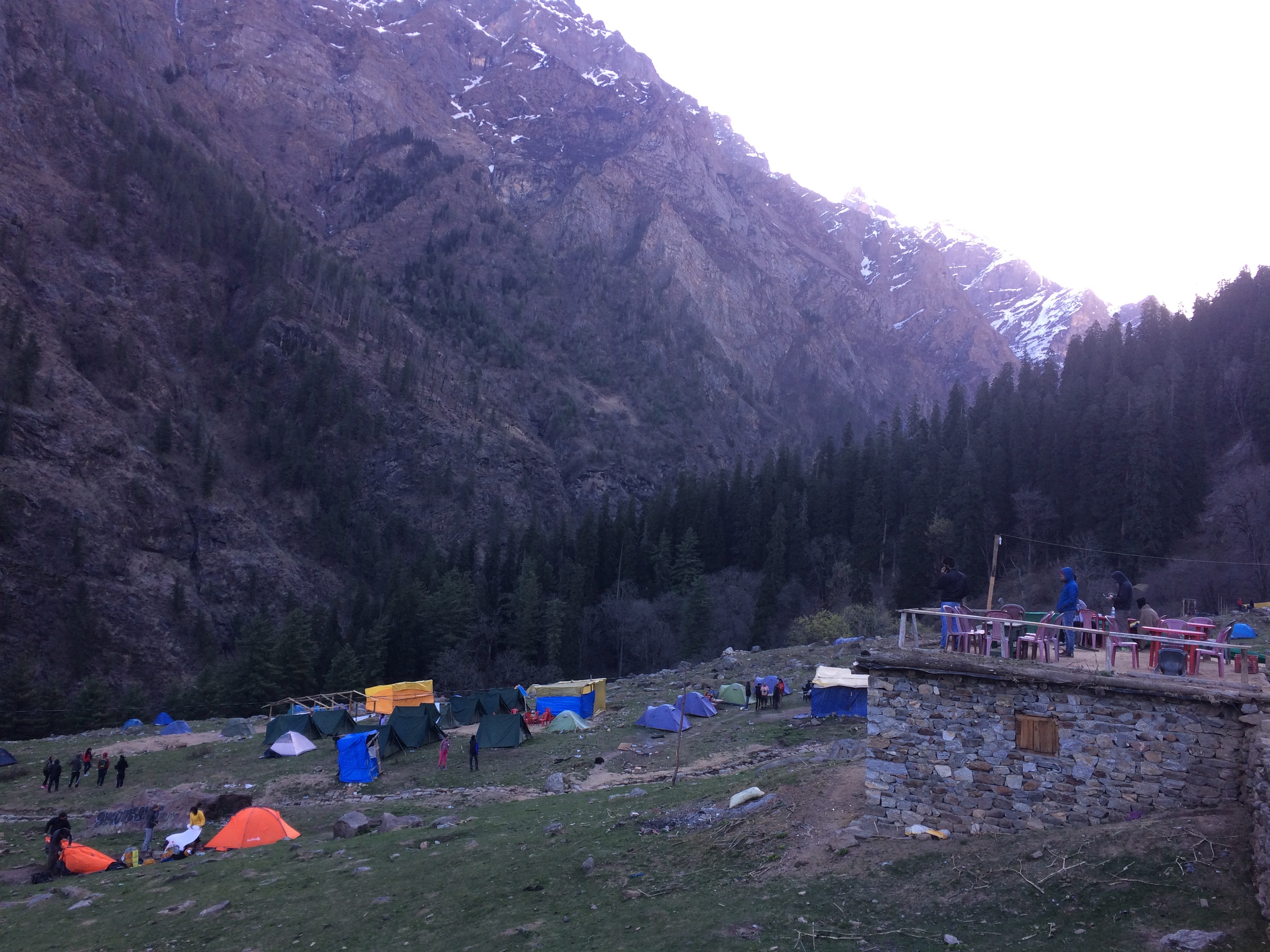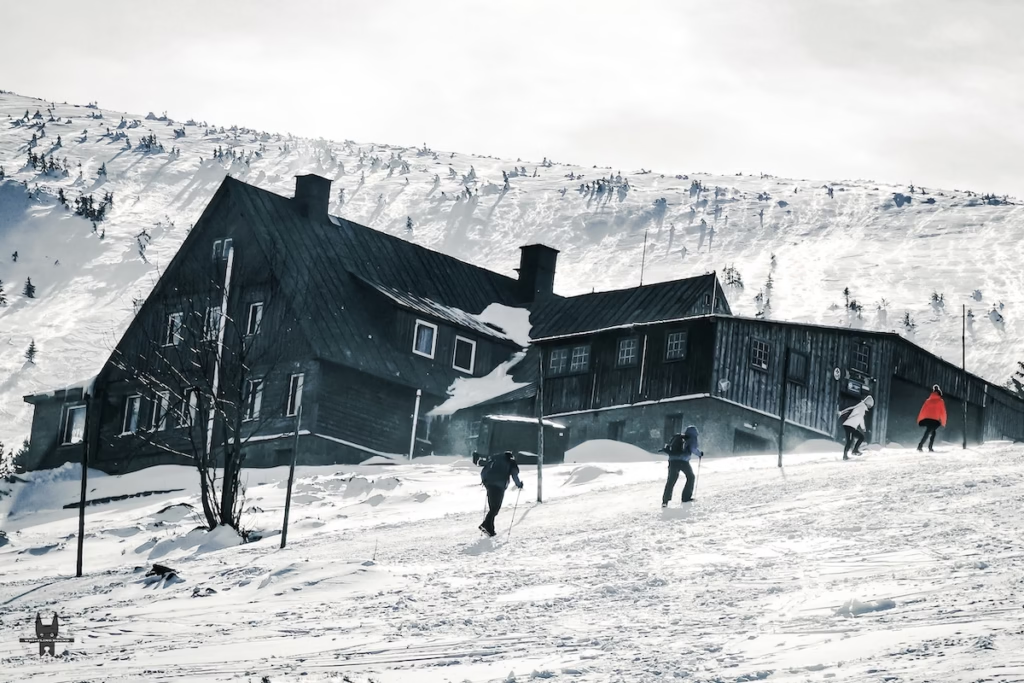Blog updated: May 2025
In 2024, the Himachal Pradesh Forest Department enforced the Kheerganga camping ban! The overnight camping is forbidden in Kheerganga, a move that both breaks my heart and fills it with hope.
The first time I trekked to Kheerganga, I stood breathless at the edge of a meadow, where snow-dusted peaks kissed the sky and a hot spring exhaled steam like a dragon’s sigh. Parvati Valley unfolded below, a tapestry of pine and river song, and I felt that rare, bone-deep peace only the Himalayas can summon. But today, Kheerganga is changing. The wild heart of this sacred alpine meadow is under siege, not from invaders, but from us, the travellers who love it too fiercely, too carelessly.
All you need to know about the Kheerganga camping ban in 2025, why it matters, and how to still chase the magic of Parvati Valley’s trails.

The Kheerganga Camping Ban: A Necessary Reckoning
In July 2024, the Forest Department acted decisively: no more tents under Kheerganga’s starlit canopy. The edict, rooted in a High Court mandate from years prior, responds to a crisis of our own making. Over the past decade, Kheerganga’s meadows morphed from a serene pilgrimage site into a chaotic bazaar of plastic wrappers and party tents. By April 2024, nearly 500 tents crowded the fragile ecosystem, their occupants leaving behind heaps of garbage that choked streams and scarred the earth. The hot springs, once a sacred balm for weary trekkers, became a dumping ground for bottles.
I’ll confess: when I first heard of the ban, a selfish part of me mourned. No more nights wrapped in a sleeping bag, the Milky Way blazing overhead, the Parvati River’s lullaby in my ears. But the wiser part, the part that’s seen mountains weep under human weight, rejoiced. This isn’t censorship; it’s salvation. The ban, effective immediately, prohibits overnight stays to let Kheerganga heal. Tourists can still visit, but only as day-trippers, arriving before 10 AM and departing by 2 PM. Violators face steep fines or permanent bans, a stern reminder that nature’s patience has limits.
Why Kheerganga Matters?

Kheerganga, perched at 2,960 meters in Himachal Pradesh’s Parvati Valley, is more than a trek; it’s a pilgrimage. Legend whispers that Lord Shiva meditated here, and the hot springs, Parvati Kund, are said to carry divine healing. The 14-kilometre trail from Barshaini weaves through apple orchards, deodar forests, and villages like Kalga and Pulga, where time seems to pause. Waterfalls tumble from cliffs, and the air tastes of pine and possibility. For trekkers, it’s a moderate climb, 4 to 6 hours of steady ascent, rewarded by stunning views.
But Kheerganga’s beauty is its curse. Its accessibility from Kasol (a 2-hour drive) and Instagram-worthy springs drew crowds that turned sacred ground into a landfill. The 2017 High Court order I wrote about years ago was a warning; the 2024 ban is the consequence. Yet, there’s hope. By curbing overnight stays, the Forest Department aims to restore Kheerganga’s ecological balance, ensuring future generations can chase its magic.
How to Trek Kheerganga in 2025?

The camping ban doesn’t mean Kheerganga is off-limits. It means you’ll need to plan smarter. Here’s your guide to a responsible, soul-stirring Kheerganga day trek:
The Route
Start from Barshaini, a quaint village where the Parvati and Tosh rivers converge. Two trails lead to Kheerganga:
- Via Kalga: A 14-km path through dense forests and waterfalls, shaded but steep. It’s my favourite, with sweet mountain streams to refill your bottle.
- Via Pulga and Tosh: A longer, 17-km route, flatter and sun-exposed, passing Rudra Nag’s serpent-shaped falls. Choose this if you prefer open views.
Both take 4–6 hours one way, so leave Barshaini by 5 AM to reach Kheerganga before 10 AM. Buses from Kasol to Barshaini run every 30 minutes, or hire a taxi for INR 500.
New Rules for Kheerganga Tourists
- Day Visits Only: Entry is permitted before 10 AM; you must leave by 2 PM. No exceptions.
- Permits: Check with the Forest Department at Barshaini for day-visit permits. Some sources suggest permission is required, though enforcement varies.
- No Littering: Carry a trash bag and bring every wrapper back. Fines are steep, and the mountains deserve better.
- No Tents: Overnight camping is banned, but day-trippers can rest at the meadow or dip in Parvati Kund.
Packing Essentials
- Trekking Gear: Sturdy shoes, a trekking pole, and a lightweight backpack. Don’t weigh yourself down with bags—keep your hands free.
- Clothing: Layers for chilly mornings and warm afternoons. A raincoat if trekking in monsoon (September–November).
- First Aid: Bandages, painkillers, and nausea tablets for altitude.
- Water and Snacks: Carry 2 litres of water and energy bars. Refill at streams, but purify if unsure.
- Trash Bag: Be the trekker who leaves no trace.
Best Time to Trek to Kheerganga
March to June offers clear skies and mild weather (13–37°C). September to November is crisp and post-monsoon lush. Winter (December–February) is snowy and treacherous, only for seasoned trekkers with guides.
Kheerganga Camping Ban! Where to Stay Instead?

With camping banned at Kheerganga, base yourself in nearby villages for a Himalayan fix:
- Kalga: A serene hamlet on the trek route, dotted with homestays and cafes. It’s my go-to for quiet nights and apple cider. Expect INR 800–1,500 per night.
- Tosh: A vibrant village with guesthouses and river views, perfect for creatives and stargazers. Rooms range from INR 1,000–2,000.
- Nakthan: Closer to Barshaini, with basic but cosy stays for INR 500–1,000.
- Barshaini: Offers budget lodges and easy trek access. Ideal for early starts.
Book ahead, especially in peak seasons, as Kheerganga’s ban has shifted demand to these villages.
The Bigger Picture: Eco-Friendly Trekking in Himachal Pradesh
Kheerganga’s ban is part of a broader reckoning in Himachal Pradesh. Rohtang, Kasauli, and Malana have faced similar restrictions, a response to “toxic tourism” that prioritises selfies over stewardship. As trekkers, we’re not just visitors; we’re custodians. Here’s how to tread lightly:
- Pack Out Trash: Every bottle, wrapper, and scrap comes back with you.
- Support Locals: Stay in homestays, eat at village cafes, and hire local guides.
- Minimise Impact: Stick to trails, avoid picking plants, and respect sacred sites.
- Spread Awareness: Share Kheerganga’s story on social media with #ResponsibleTrekking.
The Forest Department is training locals in eco-tourism, forming societies to balance livelihoods with conservation. By choosing sustainable practices, we can help Kheerganga thrive.
Alternative Adventures in Parvati Valley
If Kheerganga’s day trek rules feel restrictive, pick from these Parvati Valley treks to ignite your wanderlust:
- Pin Parvati Pass: A challenging 10-day trek for seasoned adventurers, with sparse crowds and raw beauty.
- Tosh to Kutla: A gentle 2-hour hike to a meadow campsite, legal and serene.
- Chalal Village: A 2-hour walk from Kasol, perfect for a low-key nature escape.
- Sareolsar Lake: In Kullu’s Seraj region, a day hike with pristine views.
Each offers the Himalayan alchemy of sweat, silence, and awe, minus the ecological strain.
A Call to the Wild
Kheerganga’s camping ban isn’t the end of its story, it’s a chance to rewrite ours. As I trace the trails of Parvati Valley in my mind, I see not just a meadow scarred by tents but a sanctuary poised for rebirth. The Himalayas don’t belong to us; we borrow their beauty, their breath. Let’s trek with reverence, not recklessness. Plan your Kheerganga day trek for 2025, dip your toes in Parvati Kund, and carry home only memories. The mountains are watching, and they’ll thank you.
Have you trekked Kheerganga or faced similar bans elsewhere? Share your thoughts below, and subscribe for more Himalayan tales from the trail.
Further read: Valley of Flowers & Hemkund Trek
Share this:
- Click to share on Facebook (Opens in new window) Facebook
- Click to share on LinkedIn (Opens in new window) LinkedIn
- Click to share on Reddit (Opens in new window) Reddit
- Click to share on X (Opens in new window) X
- Click to share on WhatsApp (Opens in new window) WhatsApp
- Click to email a link to a friend (Opens in new window) Email






3 thoughts on “Kheerganga Camping Ban 2025: A Trekker’s Guide to Parvati Valley’s New Dawn”
Pingback: Kheerganga Trek – A Sweet Trek In Parvati Valley Just Hours Away From Kasol – Whistling Hound
I’ve read some good stuff here. Certainly worth bookmarking for revisiting. I wonder how a lot attempt you place to create this type of excellent informative site.
I trekked to kheerhanga with 2 good friends back in 2000, what an amazing experience we were young and not very prepared , we stayed the night in a cafe by the springs they did the best pizza , they let us sleep on the benches in the cafe , I remember going for a pee and looking up at the stars in amazement it was so beautiful, such good memories ,I don’t think there was anyone camping back then , I suppose it is inevitable with any spot so stunning that it’s going to attract a lot of people and I agree with the article above that although it seems a shame to have an all out ban on camping overnight there has to be a line drawn somewhere to preserve the beauty of such an amazing spot ,I met my wife in Goa on that same trip and we returned this year after 25 years with our 2 kids and they loved it , unfortunately didn’t make to the mountains my favourite place but planning that trip for next year.